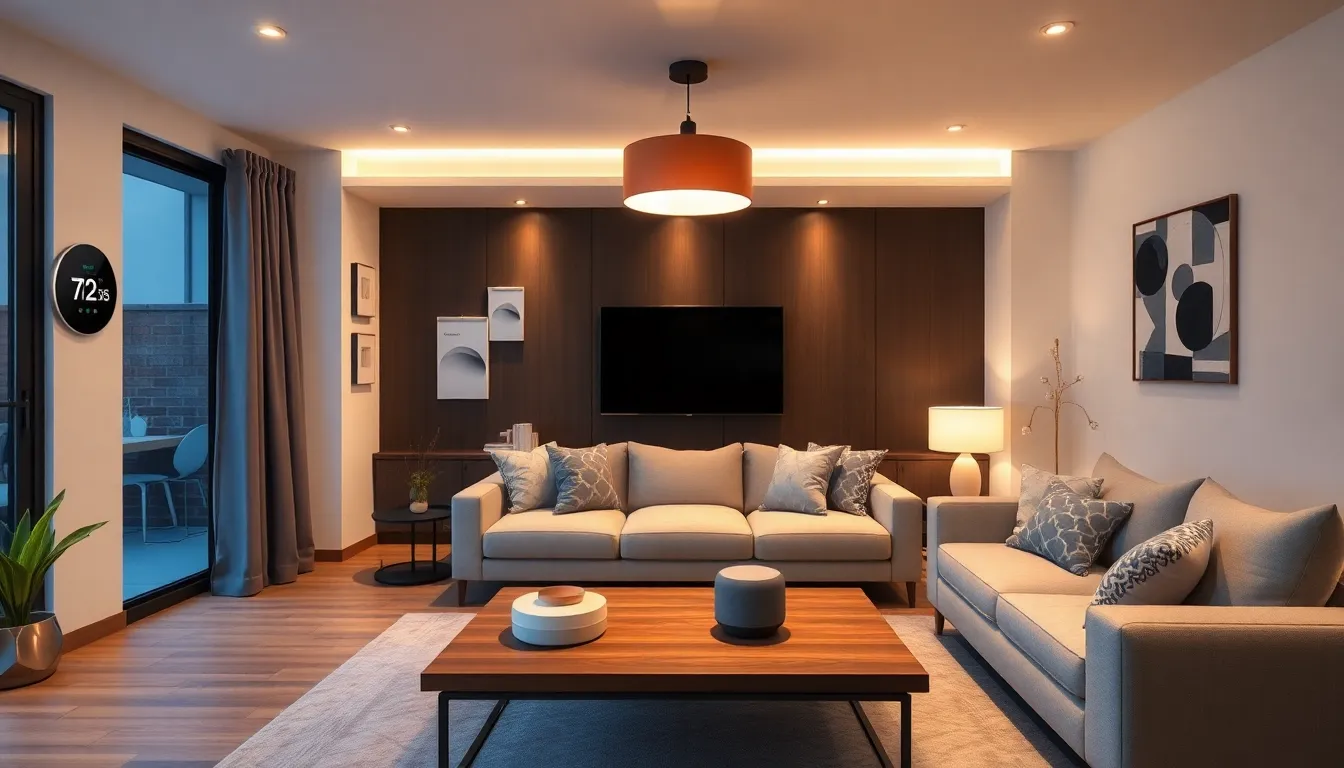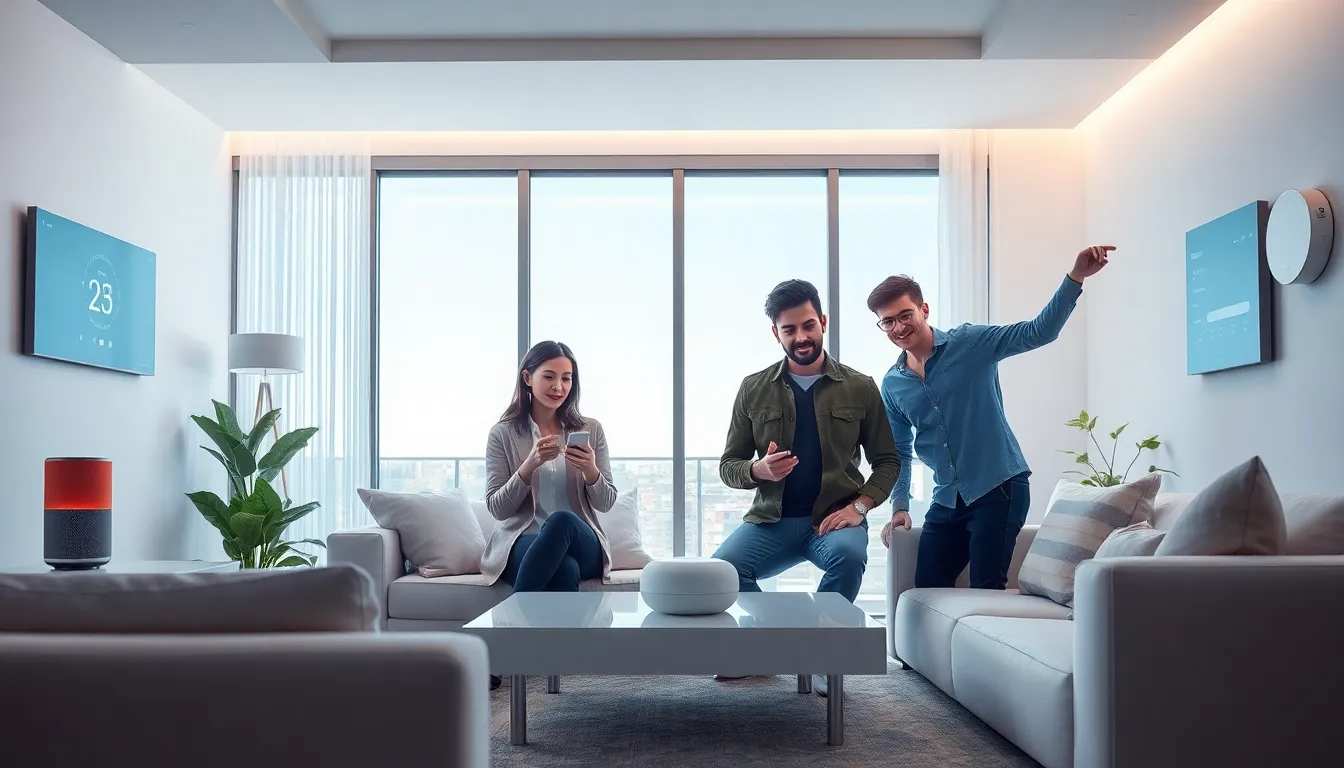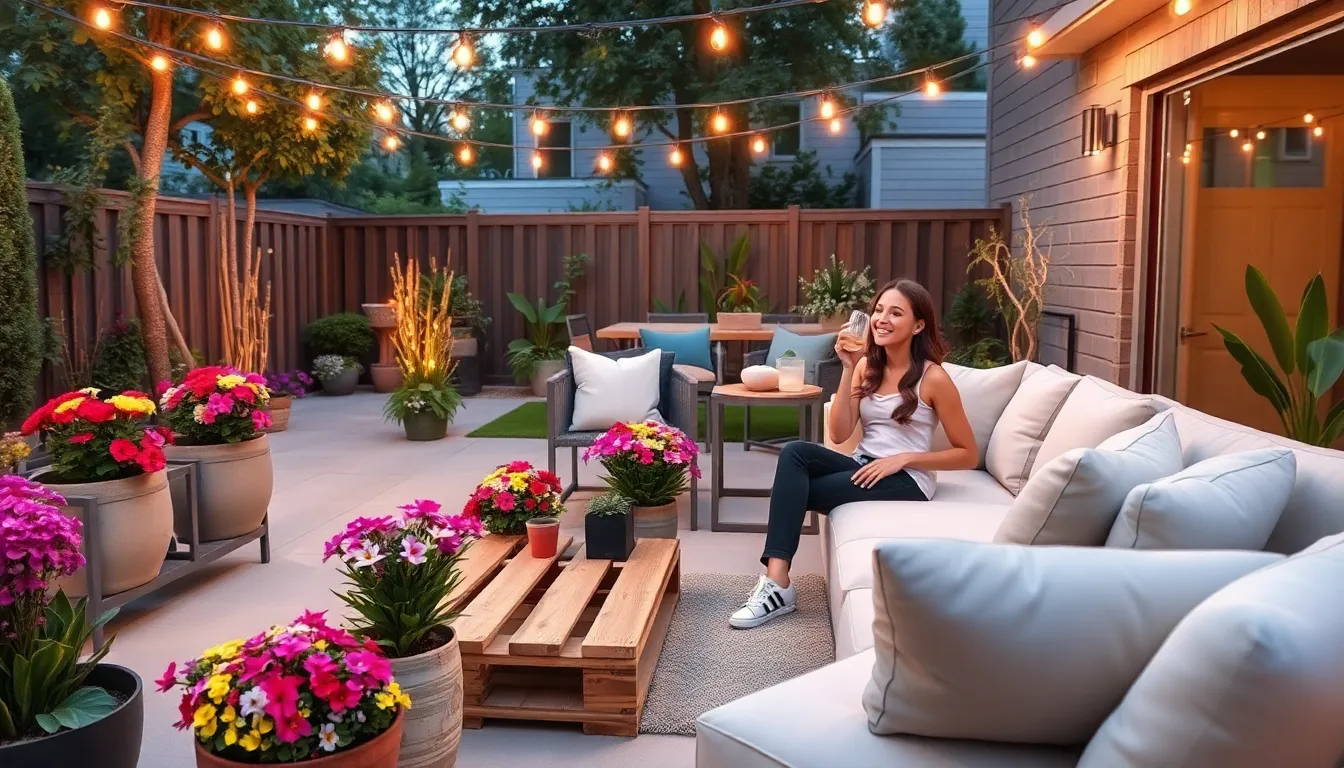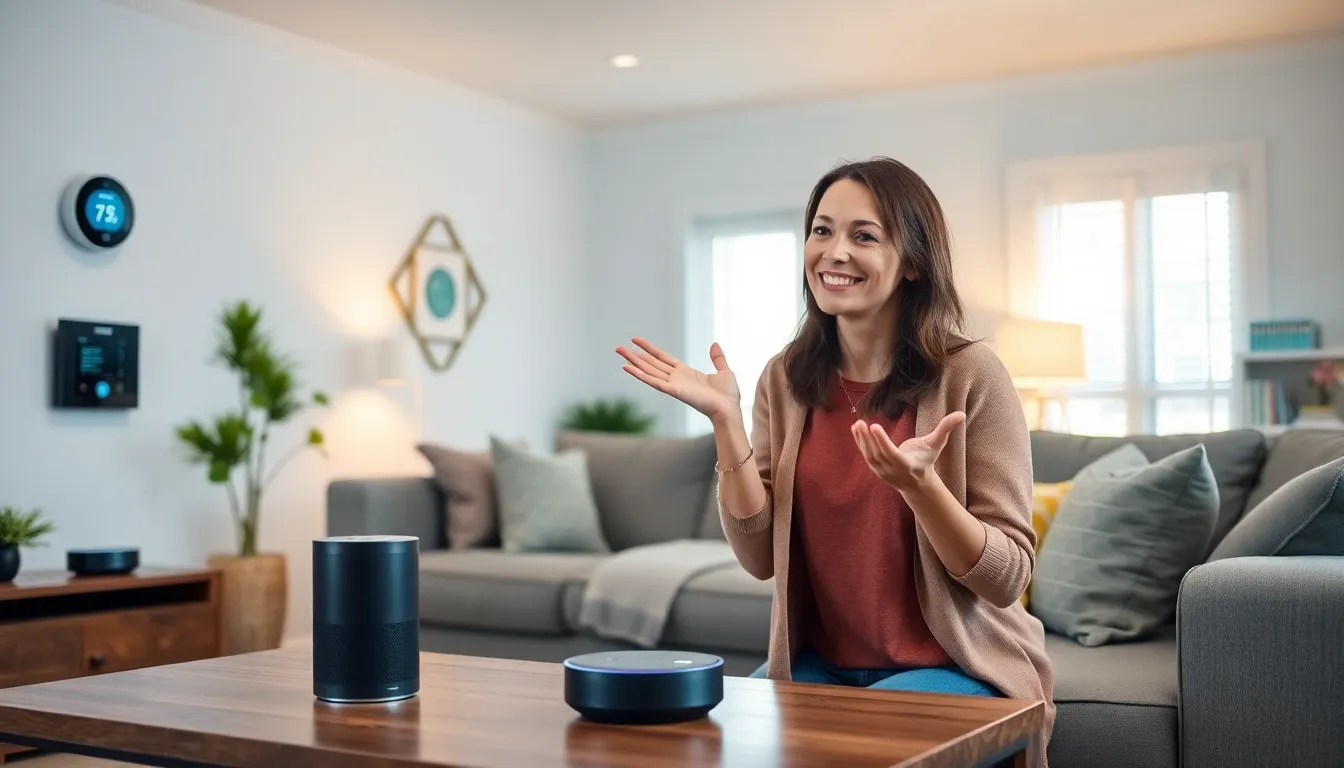Imagine walking into your home and having the lights adjust to your favorite hue while your coffee brews itself. Sounds like something out of a sci-fi movie, right? Welcome to the world of home automation, where technology meets convenience in the most delightful ways. As smart devices become more accessible, homeowners are embracing trends that not only simplify daily tasks but also make life a whole lot more fun.
Table of Contents
ToggleOverview Of Home Automation Trends
Home automation trends focus on creating interconnected systems that enhance daily living. Smart home devices provide seamless communication between various appliances. Increased adoption of voice-activated systems simplifies control over numerous functions.
Energy management systems gain traction, allowing homeowners to monitor and optimize energy usage. These innovations lead to cost savings and reduced environmental impact. Automated lighting features respond to user preferences, adjusting brightness based on time of day or occupancy.
Security systems also evolve significantly. Surveillance cameras, smart locks, and alarm systems work together to provide comprehensive safety solutions. Integration with mobile devices allows users to monitor their homes remotely.
Wearable technology begins playing a role in home automation. Users can interact with home systems through smartwatches or fitness trackers for greater convenience. Home health monitoring devices make it easier to track wellness within households.
Data privacy and security concerns drive changes in product design. Manufacturers focus on creating more secure devices that protect user information. As consumers become more informed, they prioritize privacy features in their purchasing decisions.
Smart home platforms continue to expand compatibility with a wider range of devices. This flexibility encourages more homeowners to adopt automation technologies. Traditional appliances now come equipped with smart technology, enhancing their functionality.
The demand for personalization remains strong. Consumers enjoy customizing their automated experiences to fit individual lifestyles. With diverse options available, tailoring home automation has never been easier.
Overall, home automation trends illustrate a shift towards more efficient and enjoyable living environments. Continuous advancements in technology support these developments, making smart homes increasingly accessible for everyone.
Emerging Technologies In Home Automation

Emerging technologies are transforming home automation, making it more intuitive and efficient. These advancements enhance daily living through innovative devices and integrations.
Smart Home Devices
Smart home devices serve as the backbone of home automation. Thermostats adapt to user preferences, promoting energy savings. Lighting systems can be controlled remotely, allowing for customizable environments. Doorbell cameras provide security by offering real-time video feeds. Smart speakers interact with several devices, simplifying voice control. Each device contributes to a cohesive smart ecosystem.
Internet Of Things (IoT) Integration
IoT integration plays a crucial role in unifying home automation systems. Devices communicate seamlessly, allowing data sharing among appliances. This connectivity enables efficient energy management and enhanced user control. IoT sensors monitor conditions, such as humidity and temperature, prompting automated responses. Homeowners benefit from greater insights into their energy usage through connected platforms. Integrative solutions facilitate a more streamlined and connected living experience.
Energy Efficiency And Sustainability
Home automation increasingly emphasizes energy efficiency and sustainability. Smart devices help reduce consumption, lower costs, and minimize environmental impact.
Smart Thermostats
Smart thermostats offer significant control over heating and cooling systems. These devices learn individual habits and adjust temperatures accordingly. For example, a household may save up to 10-15% on heating and cooling bills annually when using a smart thermostat. Features like remote control and scheduling make energy management intuitive. When temperatures fluctuate outside, smart thermostats automatically optimize settings to maintain comfort while conserving energy. Users gain insights into their energy usage, allowing them to make informed decisions that further enhance efficiency.
Renewable Energy Solutions
Renewable energy solutions are becoming essential in modern homes. Solar panels provide homeowners with the option to generate their own electricity, significantly reducing dependence on traditional power sources. Many smart home systems integrate with solar technology, enabling seamless energy usage monitoring. Energy storage systems, like home batteries, store solar energy for use during peak hours or outages. By utilizing these solutions, homeowners not only increase energy efficiency but also support sustainability. Adoption of renewable energy can lead to substantial long-term savings and a reduced carbon footprint, reinforcing positive environmental impact.
User Experience And Personalization
Personalization significantly enhances the user experience in home automation. Smart devices adapt to individual preferences, creating a more tailored living environment.
Voice Assistants
Voice assistants like Amazon Alexa and Google Assistant play a crucial role in home automation. These tools enable hands-free control, allowing users to adjust settings or access information effortlessly. Voice recognition technology continues to improve, making interactions more intuitive. Compatibility with a wide array of smart devices enhances their utility. Furthermore, users can create routines through voice commands, automating multiple tasks with a single phrase. This convenience reshapes daily activities, driving wider adoption of smart home systems.
Customizable Automation Scenarios
Customizable automation scenarios permit homeowners to tailor their smart environments. Users can set specific conditions for actions, such as turning on lights when entering a room or adjusting the thermostat based on occupancy. Flexibility in these scenarios enhances convenience and energy efficiency. Individuals gain greater control over system behaviors, aligning with personal routines and preferences. Advanced platforms allow for scene creation, linking multiple devices for cohesive experiences. Customization fosters engagement, empowering users to modify their settings and improve daily living.
Security Enhancements In Home Automation
Security enhancements in home automation integrate advanced technologies, ensuring comprehensive safety for homeowners. Smart locks provide controlled access, allowing users to unlock their doors remotely or through smartphone applications. These locks often feature keyless entry options, eliminating the need for physical keys.
Cameras enhance security by offering real-time video feeds directly to mobile devices. They can discretely monitor entrances and internal spaces, providing instant alerts for unusual activity. Users can access recorded footage or live views anytime, enhancing peace of mind.
Smart Locks And Cameras
Smart locks transform home entry methods by prioritizing convenience and safety. Homeowners gain the ability to lock or unlock doors via smartphone apps, granting access to guests without physical keys. Many smart locks feature built-in alarms that notify users if tampering occurs.
Smart cameras serve as crucial surveillance tools, capturing high-definition video footage. They can differentiate between familiar faces and strangers, providing alerts when unknown individuals approach. Integration with home automation systems allows for added features, like automatically turning on lights when motion is detected.
Home Surveillance Systems
Home surveillance systems offer a comprehensive approach to security. These systems typically consist of multiple cameras placed strategically around the property. Integrated features enable users to access live feeds and recorded footage from anywhere through mobile devices.
Advanced surveillance solutions often include technologies like facial recognition and motion detection. Such features enhance detection capabilities, allowing for alerts based on specific triggers. Many systems also support cloud storage for footage, ensuring valuable recordings remain accessible regardless of local hardware failures.
Home automation is reshaping the way people experience their living spaces. With advancements in technology and a focus on energy efficiency consumers are embracing smart devices to enhance convenience and security. The integration of IoT and personalized automation offers homeowners a tailored experience that aligns with their lifestyles.
As these trends continue to evolve the future of home automation looks promising. Enhanced user control and improved safety solutions are transforming homes into connected ecosystems that prioritize comfort and sustainability. With ongoing innovations homeowners can expect even more intuitive and efficient solutions that make daily life easier and more enjoyable.





